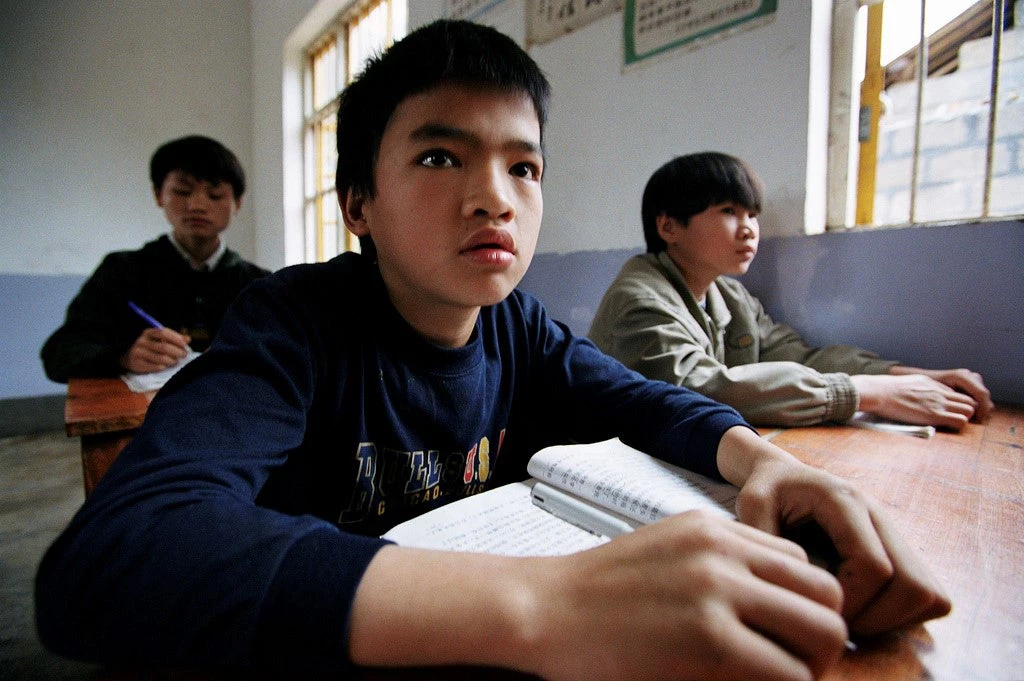
December 3 is the International Day of Persons with Disabilities. Every year, on this day, the international community comes together to take stock of the progress that has been made to advance the rights of people with disabilities around the world.
At the World Bank, we commemorate the signing of the United Nations Convention of the Rights of Persons with Disabilities and underscore our commitment to Sustainable Development Goal 4 (SDG4), to “ensure equal access to all levels of education and vocational training for the vulnerable, including persons with disabilities” by 2030. Yet, despite these international commitments, globally, too many students with disabilities still face significant barriers when it comes to attending school.
Disability in China
In China, for instance, approximately 5.8 million school-age children with disabilities face difficulties in accessing education. The rate of school dropouts for these children is close to 35 percent, with more than half having never attended school at all.
China’s policy environment is unique in that it admits many disabled children with specific educational needs into regular schools. This form of special education is referred to in the country as “Learning in Regular Classrooms” (LRC) and has led to the subsequent doubling of disabled children with specific education needs in regular schools between 1992 and 2015.
The challenge of having students with disabilities properly integrated and served in regular schools is met, in theory, by the addition of resource rooms in schools, used to support the learning of students with disabilities in regular classroom environments. What is troubling is that while over half of all Chinese students with special education needs are enrolled in non-special education schools, only about three percent of counties and county-level municipalities in China have successfully established resource rooms to support these children.
In LRC practice, resource rooms are used to help students with specific educational needs to learn in regular classroom environments. These rooms bridge the learning experience between special education class settings and full-immersion regular classrooms by providing supplementary resources for children with specific educational needs, such as extra teaching equipment and facilities, textbook resources, and aides.
What are the challenges for inclusive education in Guangdong, China?
Recent research by Professor Jiacheng Xu of Beijing Union University, and Professor Shouhong Wei of Chongqing Normal University, looks at the challenges of inclusive education in Guangdong, China. The research, supported by the World Bank, was done in collaboration with officials from 14 county governments and is based on interviews with school officials, teachers, parents and students. The research suggests:
- Most regular schools have insufficient curriculum resources and have not made any curriculum adjustments for children with specific educational needs attending their school;
- Most regular schools fail to prepare any individualized learning plans for students with disabilities;
- Most schools have failed to provide even the most basic accessible infrastructure for students, particularly those with physical disabilities;
- There are not enough county-level services to support students in need of rehabilitation, and insufficient adaptive equipment for the physically disabled;
- Parents of children with disabilities are not adequately included in and/or supported by the county education system. Nor have educational authorities adequately established connections with community institutions or hospitals that may be able to provide additional support; and
- While existing policies allow many children with specific educational needs to enroll in regular schools, there is a severe shortage of resource rooms and necessary staff to support these students to learn in this environment.
- Shift the paradigm from “learning in regular classes” to “inclusive education” in recognition of the fact that students with disabilities have a basic right to attend regular schools. Inclusive education policies should be incorporated into all educational planning.
- Expand the coverage of students with specific educational needs from the three categories traditionally covered in the counties (visual impairment, hearing impairment, and intellectual disabilities) to the full eight categories specified in the People with Disabilities Act of the People’s Republic of China.
- Build a specialized and accountable management network that extends from district level to school level, responsible for all guidance and training related to inclusive education.
- Develop more resources to support individualized education so that each student with specific educational needs is taught according to an individualized learning plan developed by resource teachers and a team comprised of discipline teachers, parents, and rehabilitation professionals.
- Construct resources rooms and build accessible infrastructure to support the learning of students with disabilities.
There are several reasons for countries to develop more inclusive education systems. Not only is the equitable education of those with disabilities a human right, enabling schools and students to respond effectively and compassionately to individual differences benefits us all.
Find out more about World Bank Education on our website and on Twitter.
Read the "Disability gaps in educational attainment and literacy" report.
Learn about the World Bank's work on disability and inclusive education around the globe in this feature story.





Join the Conversation